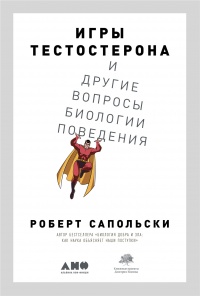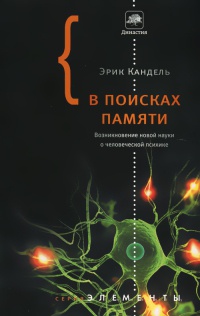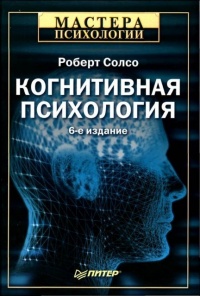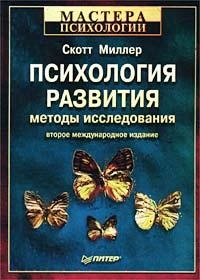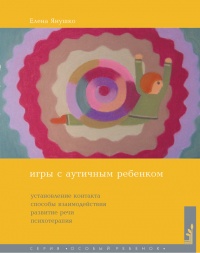Книга Психология стресса - Роберт Сапольски
Шрифт:
Интервал:
Закладка:
Глава 8. Иммунитет, стресс и болезни
Стр. 167. В качестве введения в психоиммунологию или психонейроиммунологию (изучающую связи между нервной, эндокринной и иммунной системами) можно использовать своего рода библию в этой научной дисциплине: Ader, R., Felten, D., and Cohen, N., “Psychoneuroimmunology, ” 3d ed. (San Diego: Academic Press, 2001).
Связи автономной нервной системы с иммунными органами и наличие рецепторов для автономных гормонов в иммунных клетках: Downing, J., Miyan, J., “Neural immunoregulation: emerging roles for nerves in immune homeostasis and disease,” Immunology Today 21 (2000): 277; Bellinger, D., Lorton, D., Lubahn, C., Felten, D., “Innervation of lymphoid organs — association of nerves with cells of the immune system and their implications in disease,” in Ader et al., op. cit., 55.
Психоиммунология тренированных акторов: Futterman, A., Kemeny, M., Shapiro,
D. , and Fahey, J., “Immunological and physiological changes associated with induced positive and negative mood,” Psychosomatic Medicine 56 (1994): 499.
Стр. 168. Большинство учебников психологии для колледжей вкратце знакомят с работой иммунной системы. Те, кто хотят узнать еще больше, могут получить полезные начальные сведения по иммунологии в Benjamini, E., and Leskowitz, S., “Immunology: A Short Course,” 2d ed. (New York: Wiley-Liss, 1991).
Стр. 173. Анализ врожденного иммунитета: Gura, T., “Innate immunity: ancient system gets new respect,” Science 291 (2001): 2068.
Стр. 174. Обзоры способности стресса подавлять иммунную систему: Cohen, S., and Herbert, T., “Health psychology: psychological factors and physical disease from the perspective of human psychoneuroimmunology,” Annual Review of Psychology 47
(1996) : 113; Coe, C., “Psychosocial factors and immunity in nonhuman primates: a review,” Psychosomatic Medicine 55 (1993): 298; Herbert, T., and Cohen, S., “Stress and immunity in humans: a meta-analytic review,” Psychosomatic Medicine 55 (1993): 364; Chiappelli, F., Hodgson, D., “Immune suppression,” in Fink, G., ed., Encyclopedia of Stress (San Diego: Academic Press, 2000), vol. 2, 531.
Влияние глюкокортикоидов на иммунную систему: самые современные сведения можно найти в McEwen, B., Biron, C., Brunson, K., Bulloch, K., Chambers, W., Dhabhar, F., Goldfarb, R., Kitson, R., Miller, A., Spencer, R., and Weiss, J., “The role of adrenocorticoids as modulators of immune function in health and disease: neural, endocrine and immune interactions,” Brain Research Reviews 23 (1997): 79. Некоторые новейшие молекулярные открытия, показывающие, как глюкокортикоиды подавляют распространение иммунных курьеров, см. Scheinman, R., Cogswell, P., Lofquist, A., and Baldwin, A., “Role of transcriptional activation of IkNFkappaB in mediation of immunosuppression by glucocorticoids,” Science 270 (1995): 283; and Auphan, N., DiDonato, J., Rosette, C., Helmberg, A., and Karin, M., “Immunosuppression by glucocorticoids: inhibition of NF-KB activity through induction of IkB synthesis,” Science 270 (1995): 286. (Отметьте, что это еще один случай парных статей — от двух групп, работающих на разных сторонах земного шара, — сообщающих об одном и том же открытии на протяжении одной недели.)
Глюкокортикоиды убивают клетки иммунной системы у многих видов живых существ и делают это, вынуждая ДНК крошиться на мелкие части. Это было показано во многих исследованиях, классическим из которых можно назвать Wyllie, A., “Glucocorticoid-induced thymocyte apoptosis is associated with endogenous endonuclease activation,” Nature 284 (1980): 555; Cohen, J., and Duke, R., “Glucocorticoid activation of a calciumdependent endonuclease in thymocyte nuclei leads to cell death,” Journal of Immunology 132 (1984): 38; Compton, M., and Cidlowski, J., “Rapid in vivo effects of glucocorticoids on the integrity of rat lymphocyte genomic DNA,” Endocrinology 118
(1986) : 38. Как отмечалось на протяжении этой главы, нередко возникает вопрос: «Если вы введете животному тонну глюкокортикоидов и каким-то образом вызовете беспорядок в его иммунной систем, (в данном случае посредством уничтожения лимфоцитов), то будет ли это «физиологическим эффектом» — будут ли меньшие количества глюкокортикоидов, выделяемых во время стресса (или сам стресс) делать то же самое?» Предыдущая работа также предоставляет немного данных, позволяющих предположить, что стресс будет разрушать лимфоциты тем же способом: Compton, M., Haskill, J., and Cidlowski, J., “Analysis of glucocorticoid actions on rat thymocyte DNA by fluorescence-activated flow cytometry,” Endocrinology 122 (1988): 2158. О некоторых недавно открытых механизмах, лежащих в основе вызываемого глюкокортикоидами апоптоза, см. в Nocentini, G., Giunchi, L., Ronchetti, S., Krausz, L., Bartoli, A., Moraca, R., Migliorati, G., Riccardi, C., “A new member of the tumor NF/ NGF receptor family inhibits T cell receptor-induced apoptosis,” Proceedings of the National Academy of Sciences, USA 94 (1997): 6216.
Стр. 176. Роль симпатической системы в подавлении иммунитета: Hori, T., Ka- tafuchi, T., Take, S., Shimizu, N., and Nijima, A., “The autonomic nervous system as a communication channel between the brain and the immune system,” Neuro- immunomodulation 2 (1995): 203; role of beta-endorphin: Shavit, Y., Lewis, J., and Terman, G., “Opioid peptides mediate the suppressive effect of stress on natural killer cell cytotoxicity,” Science 188 (1984): 233; role of CRH: Irwin, M., Vale, W., and Rivier, C., “Central CRF mediates the suppressive effect of footshock stress on natural cytotoxicity,” Endocrinology 126 (1990): 2837. Глюкокортикоиды не играют заметной роли в некоторых ситуациях подавления иммунитета: Gust, D., Gordon, T., and Wilson, M., “Removal from natal social group to peer housing affects cortisol levels and absolute numbers of T cell subsets in juvenile rhesus monkeys,” Brain Behavior and Evolution 6
(1992) : 189; Manuck, S., Cohen, S., Rabin, B., Muldoon, M., and Bachen, E., “Individual differences in cellular immune response to stress,” Psychological Sciences 2 (1991): 111; Keller, S., Weiss, J., Schleifer, S., Miller, N., and Stein, M., “Stress-induced suppression of immunity in adrenalectomized rats,” Science 221 (1983): 1301.
Стр. 177. Идея о том, что не все характеристики организма обязательно делались адаптивными под влиянием эволюции, встречается во многих трудах Стивена Джея Гулда. Наиболее сжато она представлена в “The spandrels of San Marco and the Panglossian paradigm: a critique of the adaptationist programme”, написанной совместно с генетиком Ричардом Левонтином. Proceedings of the Royal Society of LondonB (1979): 205.
Стр. 177. Интерлейкин-1 вызывает выделение КРГ из гипоталамуса: Sapolsky, R., Rivier, C., Yamamoto, G., Plotsky, P., and Vale, W., “Interleukin-1 stimulates the secretion of hypothalamic corticotropin-releasing factor,” Science 238 (1987): 522; Berkenbosch,
F. , van Oers, J., del Rey, A., Tilders, F., and Besedovsky, H., “Corticotropin-releasing factor-producing neurons in the rat activated by interleukin-1,” Science 238 (1987): 524.
Сноска. Еще более осложняет ситуацию то, что в том же выпуске имелся отчет о том, что ИЛ-1 работает в мозге на уровне гипофиза, а не гипоталамуса, чтобы стимулировать реакцию на стресс: Bernton, E., Beach, J., Holaday, J., Smallridge, R., and Fein, H., “Release of multiple hormones by a direct action of interleukin-1 on pituitary cells,” Science 238 (1987): 519. Я думаю, что некий консенсус возникает по поводу того, что влияние на гипоталамус возникает у животного репродуктивно, тогда как влияние гипофиза зависит от использования клеток гипофиза в чашке Петри (а не в живом животном) и от условий, при которых клетки выращиваются в чашке Петри. О недавних открытиях в этой области см. в Bethin, K. E., Vogt, S. K., Muglia, L. J., “Interleukin-6 is an essential, corticotropin-releasing hormone-independent stimulator of the adrenal axis during immune system activation,” Proceedings of the National Academy of Sciences, USA 97 (2000): 9317.





















